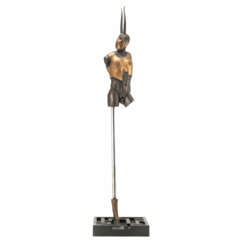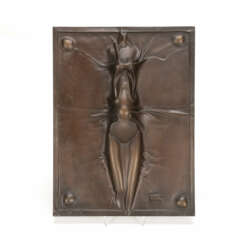paul brauns

Paul Lehmann-Brauns was a German painter, known as a landscape painter.
Paul Lehmann-Brauns lived in Berlin, but found inspiration for his works in Hamburg, Potsdam, the Thuringian Forest and the Central German Uplands. The North Frisian Islands were his favourite subject.


Paul Lehmann-Brauns was a German painter, known as a landscape painter.
Paul Lehmann-Brauns lived in Berlin, but found inspiration for his works in Hamburg, Potsdam, the Thuringian Forest and the Central German Uplands. The North Frisian Islands were his favourite subject.


Paula Moderzohn-Becker was a German early expressionist painter.
In her youth she attended the traditional School for Women Artists in Berlin. Like many local German artists, she painted sentimental landscapes and scenes from peasant life.
And in 1900 Paula traveled with her husband to Paris, where she was influenced by post-Impressionist paintings and became an ardent enthusiast of painting by Paul Gauguin and Paul Cézanne. Today she is considered a forerunner of Expressionism because of the power of her compositions, although during her lifetime she was completely ignored. During her short career Moderzohn-Becker painted 750 canvases, about 1,000 drawings and 13 etchings, all of which incorporated the major art movements of the early 20th century.


Paul Wunderlich was a German painter, sculptor and graphic artist. He designed Surrealist paintings and erotic sculptures. He often created paintings which referred to mythological legends.


Paul Wunderlich was a German painter, sculptor and graphic artist. He designed Surrealist paintings and erotic sculptures. He often created paintings which referred to mythological legends.


Paul Wunderlich was a German painter, sculptor and graphic artist. He designed Surrealist paintings and erotic sculptures. He often created paintings which referred to mythological legends.


Paul Scheurich was a German painter, graphic artist, commercial graphic designer, and small-scale sculptor, renowned for his significant contribution to porcelain sculpture in the first half of the 20th century. Born on October 24, 1883, in New York City, he later settled in Germany where he developed his craft and became celebrated for his works that often mirrored the Rococo style, particularly in his designs for the Meissen porcelain manufactory from 1918 to 1936.
Scheurich's expertise in creating figurative models and his professorship at Meissen played a pivotal role in establishing him as a leading figure in porcelain art. His works, which also include stage designs and banknotes, are reflections of his diverse skill set and artistic influence during his time. Notably, his creations have graced exhibitions and left a lasting legacy in the world of art.
For collectors, auctioneers, and art and antiques experts, Paul Scheurich’s work is a symbol of refined craftsmanship and historical significance. To receive updates on new product sales and auction events related to Paul Scheurich's work, sign up for our notifications and ensure you are informed about the latest available pieces.


Paul Wunderlich was a German painter, sculptor and graphic artist. He designed Surrealist paintings and erotic sculptures. He often created paintings which referred to mythological legends.


Paul Wunderlich was a German painter, sculptor and graphic artist. He designed Surrealist paintings and erotic sculptures. He often created paintings which referred to mythological legends.


Paul Wunderlich was a German painter, sculptor and graphic artist. He designed Surrealist paintings and erotic sculptures. He often created paintings which referred to mythological legends.


Paul Wunderlich was a German painter, sculptor and graphic artist. He designed Surrealist paintings and erotic sculptures. He often created paintings which referred to mythological legends.


Paul Wunderlich was a German painter, sculptor and graphic artist. He designed Surrealist paintings and erotic sculptures. He often created paintings which referred to mythological legends.


Paul Wunderlich was a German painter, sculptor and graphic artist. He designed Surrealist paintings and erotic sculptures. He often created paintings which referred to mythological legends.


Paul Wunderlich was a German painter, sculptor and graphic artist. He designed Surrealist paintings and erotic sculptures. He often created paintings which referred to mythological legends.


Julius Paul Schmidt-Felling was a German sculptor who worked during the mid-to-late 19th century and early 20th century. The subject matter of his work was wide and varied. He produced, among others, bronze statues of heroic warriors, athletes, blacksmiths, and farmers. A number of his sculptures of young children were in the Dutch colonial style, some being whimsical in nature.


Julius Paul Schmidt-Felling was a German sculptor who worked during the mid-to-late 19th century and early 20th century. The subject matter of his work was wide and varied. He produced, among others, bronze statues of heroic warriors, athletes, blacksmiths, and farmers. A number of his sculptures of young children were in the Dutch colonial style, some being whimsical in nature.


Victor Brauner was a Romanian Surrealist painter and sculptor. He was born in Piatra Neamț, Romania, and studied at the School of Fine Arts in Bucharest before moving to Paris in 1930.
Brauner's art was heavily influenced by his interest in the occult, and his work often featured mystical and dreamlike imagery. He was particularly interested in alchemy and mythology, and his paintings often included references to ancient symbols and esoteric traditions.
During World War II, Brauner was forced to flee Paris and spent time in Marseille and Casablanca before returning to the city in 1945. After the war, he became involved in the French Surrealist movement, and his work was featured in several exhibitions, including the Exposition Internationale du Surréalisme in 1947.
In addition to painting, Brauner also worked as a sculptor, and his sculptures often incorporated found objects and unconventional materials.
Today, Brauner is considered one of the most important figures of the Surrealist movement, and his work continues to be exhibited and studied around the world. His legacy has had a significant impact on the development of modern and contemporary art.


Julius Paul Schmidt-Felling was a German sculptor who worked during the mid-to-late 19th century and early 20th century. The subject matter of his work was wide and varied. He produced, among others, bronze statues of heroic warriors, athletes, blacksmiths, and farmers. A number of his sculptures of young children were in the Dutch colonial style, some being whimsical in nature.


Paul Flora was an Austrian cartoonist, graphic artist, and illustrator known for his skill with pen and ink.
Flora's work has appeared in the famous New York Times and The Observer newspapers, and his drawings have graced the stamps of Liechtenstein and Austria. Paul Flora has been one of Europe's most famous illustrators since the 1960s.
He also produced books, films and sets.


Paul Wunderlich was a German painter, sculptor and graphic artist. He designed Surrealist paintings and erotic sculptures. He often created paintings which referred to mythological legends.


Paul Wunderlich was a German painter, sculptor and graphic artist. He designed Surrealist paintings and erotic sculptures. He often created paintings which referred to mythological legends.


Paul Wunderlich was a German painter, sculptor and graphic artist. He designed Surrealist paintings and erotic sculptures. He often created paintings which referred to mythological legends.


Paul Wunderlich was a German painter, sculptor and graphic artist. He designed Surrealist paintings and erotic sculptures. He often created paintings which referred to mythological legends.


Paul Wunderlich was a German painter, sculptor and graphic artist. He designed Surrealist paintings and erotic sculptures. He often created paintings which referred to mythological legends.

































































